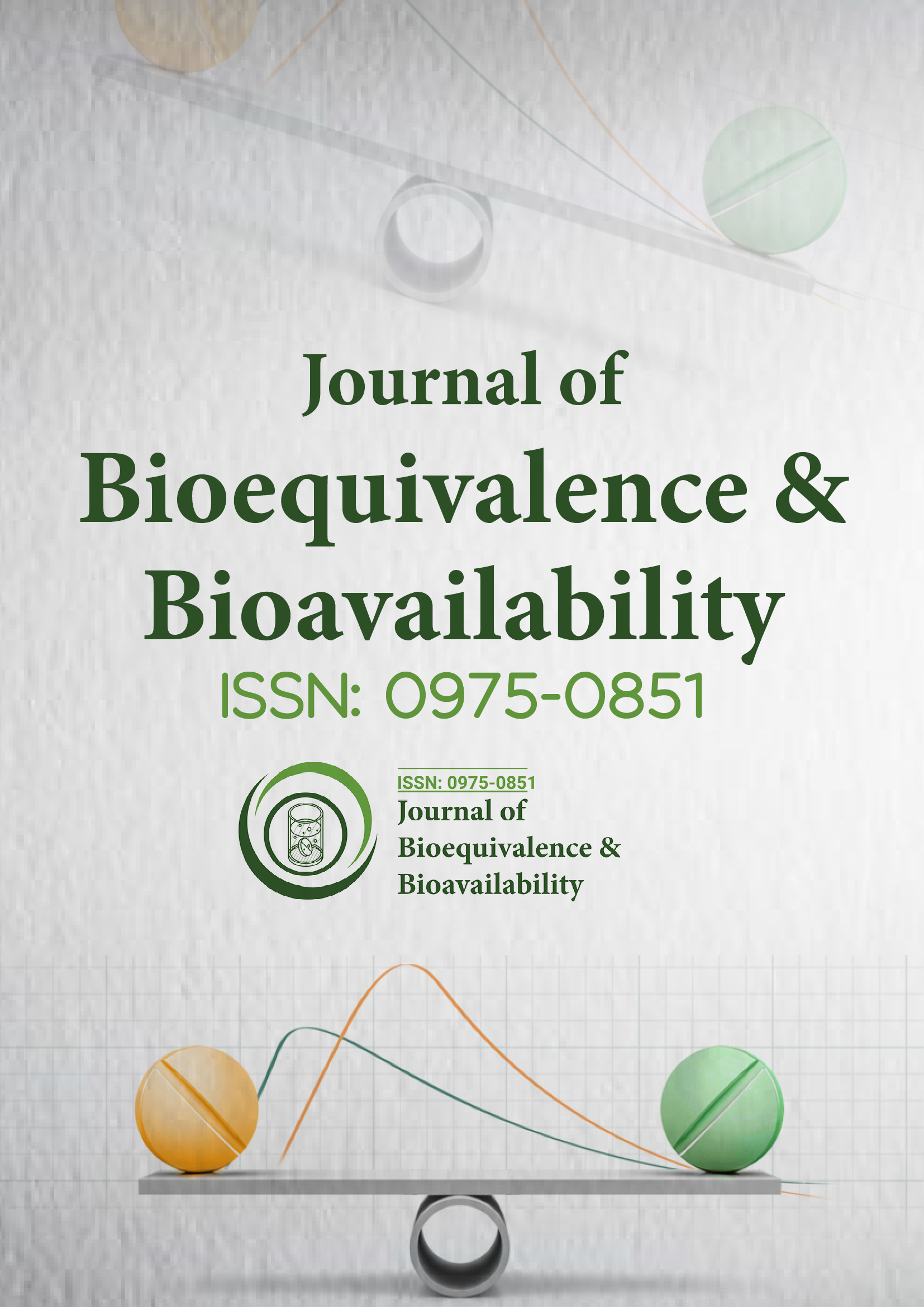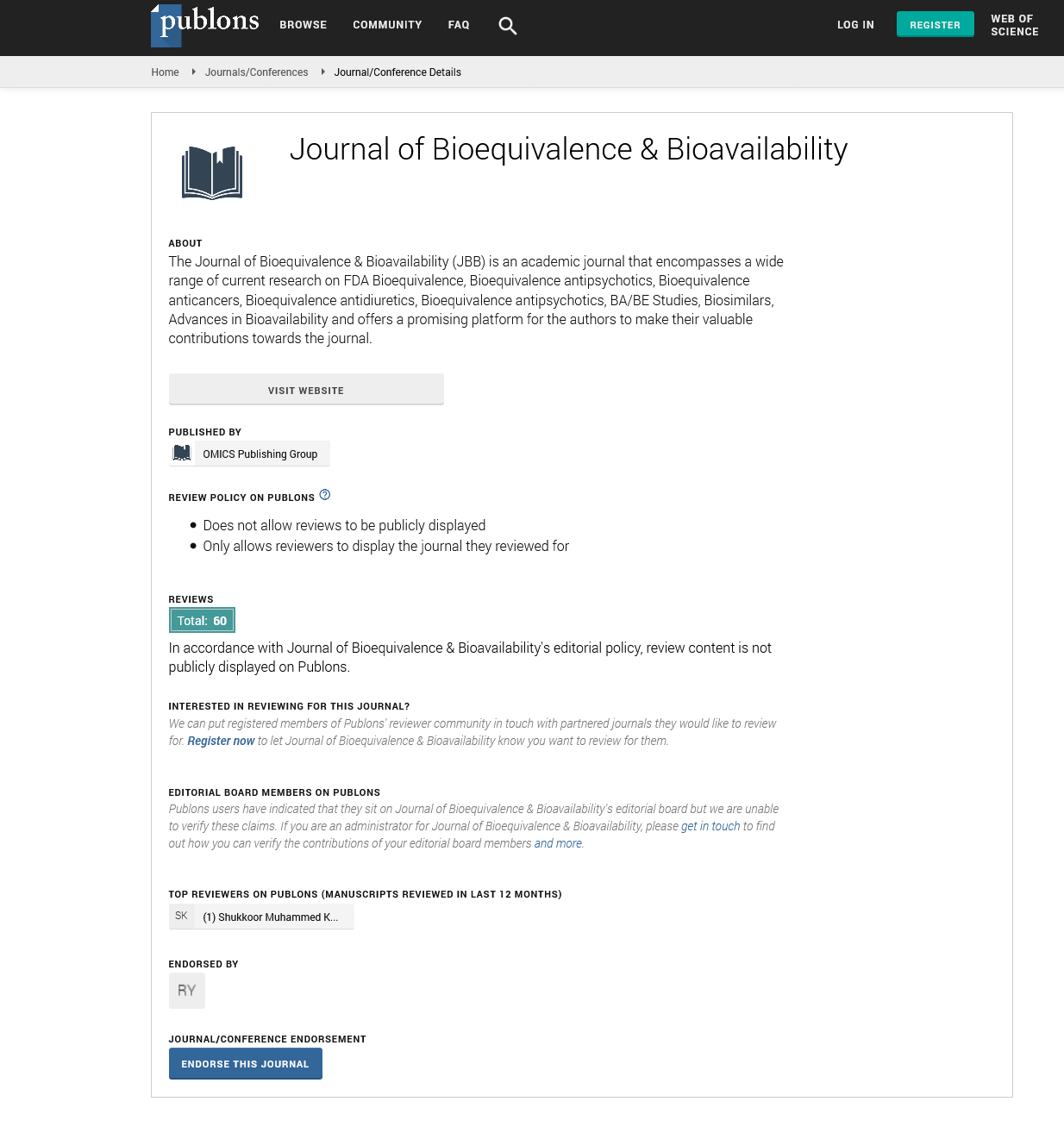Indexed In
- Academic Journals Database
- Open J Gate
- Genamics JournalSeek
- Academic Keys
- JournalTOCs
- China National Knowledge Infrastructure (CNKI)
- CiteFactor
- Scimago
- Ulrich's Periodicals Directory
- Electronic Journals Library
- RefSeek
- Hamdard University
- EBSCO A-Z
- OCLC- WorldCat
- SWB online catalog
- Virtual Library of Biology (vifabio)
- Publons
- MIAR
- University Grants Commission
- Geneva Foundation for Medical Education and Research
- Euro Pub
- Google Scholar
Useful Links
Share This Page
Journal Flyer

Open Access Journals
- Agri and Aquaculture
- Biochemistry
- Bioinformatics & Systems Biology
- Business & Management
- Chemistry
- Clinical Sciences
- Engineering
- Food & Nutrition
- General Science
- Genetics & Molecular Biology
- Immunology & Microbiology
- Medical Sciences
- Neuroscience & Psychology
- Nursing & Health Care
- Pharmaceutical Sciences
Importance of metabolite data in bioequivalence studies - Sample size and power
9th World Congress on Bioavailability and Bioequivalence
April 16-18, 2018 Dubai, UAE
Lara Tutunji and Maha Tutunji
The University of Jordan, Jordan
Posters & Accepted Abstracts: J Bioequiv Availab
Abstract:
Purpose: to investigate whether the combined concentrations of the parent drug and its corresponding metabolite impacts the experimental design of bioequivalence studies. Background: Bioequivalence studies have been used to establish equivalency of a generic drug product after modifying an existing formulation of an innovator product. Classically, bioequivalence assessment relies on the concept of average bioequivalence. In most cases, bioequivalence studies are carried out focusing on the measurement of the parent drug. The role of the emtabolite in bioequivalence remains a controversial issue. It has also been demonstrated that the application of the 0.80 â?? 1.25 bioequivalence limits to the sum of the parent compound and its active metabolite may have misleading results. Methods: Data presented were obtained from several bioequivalence studies under fasting conditions for drugs that have active metabolites. The analytical method used was a validated LC-MS/MS method. Bioequivalence criteria of 80 â?? 125% were applied to the parent compound, the active metabolite, and the sum of the parent drug and the active metabolite. Pharmacokinetic data mainly AUC, Tmax, Cmax, and elimination half-life were reported. Results: Similar results were obtained for the parent drug, metabolite, and the sum of the parent drug and metabolite for AUC. In the case of Cmax, the intersubject variability for the metabolite and the sum of the parent and the metabolite was lower than that of the parent drug while the power of the bioequivalence decision was higher for the metabolite and the sum of the parent drug and the metabolite. Conclusions: The power of estimating Cmax using the metabolite data was higher than for the drug alone so a more accurate decision can be made using the metabolite data. As a result of the higher power, the sample size can be lowered accordingly. l.tutunji@ju.edu.jo

